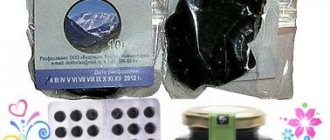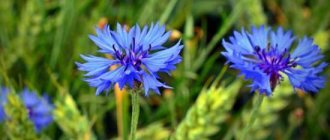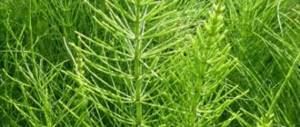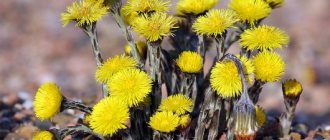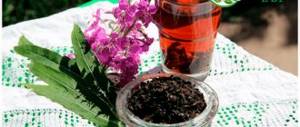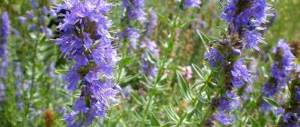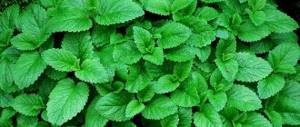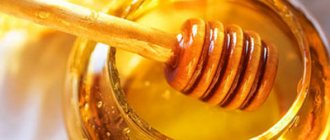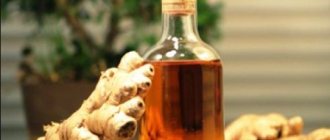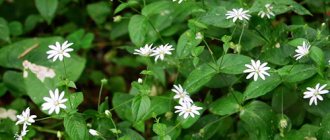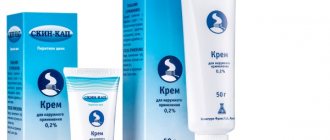One of the most popular and cheapest drinks in the Soviet Union was birch sap, which cost only 8 kopecks per glass and was sold on tap in every buffet and cafeteria. The procurement of raw materials was put on an industrial footing - canned birch sap, popularly nicknamed berezovitsa, was bottled in three-liter jars and sold in all grocery stores.
A tasty healing drink, loved by children and adults, is currently extracted and preserved by several factories. The independent collection of valuable liquid for food and medicinal purposes has not lost popularity. Residents of rural and forest areas where birch trees grow prepare and preserve the sap, consuming the elixir throughout the year.
Composition of birch sap
The properties of birch sap are determined by its rich composition. So, it contains:
- A complete vitamin “bouquet”.
- Minerals and other beneficial elements including calcium, manganese, potassium and copper.
- Carbohydrates.
- Tannins (tannin, ellagon tannic acid).
- Saponins.
- Essential oils.
In addition, this drink can be classified as dietary, because its calorie content is only 21-23 kcal per 100 g. Therefore, nutritionists recommend including it in the menu of obese people and those who go to the gym. In addition to the fact that the body will be saturated with useful vitamin and mineral composition, you will not receive any “heavy” substances that can adversely affect the condition of your figure and which are usually “deposited” in problem areas - the sides and hips.
Birch sap: benefits
Let's look at the benefits of birch sap:
- Due to the fact that birch sap contains minerals such as potassium and magnesium, it is useful for people who suffer from cardiovascular diseases and kidney pathologies. Birch sap can also help with such a rare disease as scurvy.
- Birch sap is a tonic drink. It gives a charge of vivacity, gives strength and improves mood. It is perfect for those who play sports and lead an active lifestyle. It is useful for schoolchildren and students to take it during their studies, because it allows them to reduce tension during mental stress.
- In folk medicine, birch sap has found its use for the treatment of gastritis, stomach and intestinal ulcers. At the same time, it helps to accelerate the healing of various defects in the gastrointestinal mucosa.
- Birch sap is useful as a diuretic, hematopoietic and anticancer agent. In addition, it can be used to reduce blood pressure, stop bleeding, and fight sclerosis.
- Due to the fact that orange juice combines vitamins C and P, it can be used to reduce the permeability of blood vessels, as well as to strengthen their walls.
- Birch sap improves appetite, has a laxative and choleretic effect. In its pure form, it is used in the complex treatment of obesity and blockage of vascular walls.
- In addition, this juice can help with increased bleeding gums, skin diseases, bloating and other types of bleeding. Birch sap contains absolutely no cholesterol or fat. At the same time, it is much tastier than foods containing cholesterol.
- For urolithiasis, it is useful to drink a mixture of juices, which is prepared from birch, lemon, and orange drinks. It is advisable to sweeten the mixture with honey.
- In order to enhance the effects of birch sap, it is recommended to mix it with carrot and cabbage drink. This remedy will help in the treatment of gastritis in remission, constipation, enterocolitis and other gastrointestinal diseases. In addition, it helps to get rid of increased gas formation, and in just a few days. You can add a little more celery juice to this mixture.
Birch sap: harm
Birch sap, for all its usefulness, can harm some people:
- For example, it is harmful to people suffering from stomach ulcers.
- It can also harm those who have severe diabetes. If you have such diseases, you should consult with a qualified specialist before using various traditional medicine recipes.
- Contraindicated in case of urolithiasis.
- Do not use if you have an individual intolerance.
- In general, this juice can be harmful even to healthy people, especially if consumed too often and in large quantities. So, this can disrupt the functioning of the pancreas.
Harm of birch sap. List of contraindications
To get a boost of energy and refreshment on a hot day, people try to collect as many liters of their favorite, tasty and healthy liquid as possible to drink birch sap. The benefits and harms of a healing drink are not comparable. No harmful effects on the human body have been identified, the list of contraindications for use is short, and only in a few cases can the juice cause harm to the body.
You should not drink birch sap if you have a stomach ulcer. For medical reasons, people who are allergic to birch pollen are contraindicated from drinking the juice; at the first sign of a skin rash, they should exclude the product from their menu.
You can drink the healing liquid for children older than one year, adult men and women. This wonderful gift of nature is recommended for use and permitted for sick and healthy people; there are no contraindications for use by pregnant women.
How to properly collect birch sap
In order for the juice to bring maximum benefits, it should be collected correctly. Collection season is early spring (from early March to mid-April). During this period, buds are just beginning to form on the trees. It is best to select not shady meadows for collecting sap, but single-growing trees that receive unhindered sunlight. The juice from such trees is considered the healthiest and most delicious.
To avoid injuring the tree, it is better to use a thin and sharp awl to collect sap. It is used to make a thin hole in a tree post. It should be located at an angle so that the liquid can flow down along the made gutter. The hole should be made in the lower part of the post, at a distance of 18-20 cm from the soil. A gutter is inserted into it, through which the juice flows into a pre-prepared container. To collect nectar, it is better to select trees with a thick base (more than 12 cm in diameter). Moreover, you cannot make more than 3 holes in each post, as this will injure the tree.
The most optimal time for collecting juice is the lunch period from 11.00 to 16.00. At this time, nectar from the birch will flow more efficiently than in the late evening or early morning. If you need to collect a large amount of sap in one day, then use 2-3 trees to collect at the same time. However, keep in mind that all birch trees must grow in sunny meadows. After the required amount of juice has been collected, it is best to place a wooden peg in the hole. In this way, you can protect the tree trunk from further destruction. Next, we will consider what to do with birch sap in order to extend its shelf life and maintain the maximum usefulness of the drink.
Production
During the first sunny days of spring, when the sun sufficiently heats the bark - even before the leaves develop, a woody drink is extracted.
Traditionally this can be done using two methods.
- The first is to make a cut in the shape of the letter Y or V. Once sharp stones were used for this, now this is done with an ax, a knife, at the bottom of the cut, a straw, a twig, a tube is placed, and a vessel is placed under it into which the healing drink flows.
- The second method is to drill to a depth of approximately 4 cm. At the moment, on farms where wood drinks are produced on an industrial scale, several technological improvements are used to ensure that the selection conditions are sterile, effective and cause as little harm as possible to the trees, and how They supplied as much juice as possible.
Basically, one tree gives from 4 to 7 liters of liquid during the day.
The quality and composition depend on many factors, which include the age of the tree, the type of tree and weather conditions. According to some literature sources, high-quality juice is extracted during warm days, which are interspersed with cold nights.
The time of extraction and the environment around the trees from which we take the liquid are important. Please pay attention to the fact that in the immediate vicinity there are no large industrial enterprises, factories, factories, or heavily traveled transport routes. Because trees can extract pollutants from the soil and supply them to us along with their sap.
Juices obtained from different types of trees were always consumed during periods of vitamin deficiency, for example, when winter supplies ran out and the availability of other products was significantly limited.
Birch sap: storage conditions
Sometimes the question arises, how long can birch sap be stored? If you do not comply with the storage requirements and keep the juice in a bright and warm place, then it can ferment within 1-2 days. In order to extend its “service life”, you should immediately strain it fresh. This will help remove heavy impurities that cause fermentation. For straining, use a thin textile cloth or gauze folded in several layers. If you place fresh juice in the refrigerator, you can extend its shelf life by 2-3 days, after which it may turn sour.
There are several options for storing juice:
- Freezing. This will require clean containers or sterile containers. The juice is placed in a freezer where the temperature is constantly maintained at a low temperature.
- Conservation. This method of storage is not entirely acceptable, since the juice in this case is deprived of a certain part of the vitamins. However, if there is no way out, you can use this option. For preservation you will need clean sterile jars. Before rolling, the juice is heated to a temperature of 75 degrees, and then poured into containers and rolled.
- Production of birch concentrate. The juice is heated to a temperature of 65 degrees. In this case, 2/3 of the juice is evaporated, and the remaining part is poured into sterile containers. Juice jars must be completely sealed.
If all storage conditions are met, then this birch sap can be drunk and used for treatment purposes.
Other trees
Most tree sap has an interesting, slightly sweet taste, depending on the type of tree from which it is extracted - more or less sweet, often with a characteristic smell, taste or color.
Traditional medicine in the Balkan countries recommended the use of grapevine juice to combat dry eyes and remove skin pigmentation, including freckles. Grape (called “tears of the vine”) was used against the formation of stones in the bladder, and ash is recommended as a laxative.
Dogwood juice was used to treat purulent infections. Hungarian shepherds added fresh juices to water, believing that they helped in the digestion of heavy foods. In Hungarian folk medicine, maple juice effectively treated coughs. In the homeland of Count Dracula, juice from the grapevine treated inflammation of the eyes.
Traditionally they were fermented. The collected liquid was poured into barrels installed in a dark place and added: dried apples, pears, roasted barley or oat grain, peas, wheat flour or a piece of sourdough bread.
In some literature, you can find references to the use of tree sap for making coffee and making bread.
Among the North American Indian tribes, the use of tree sap was widely known. It was partially evaporated, and during the fermentation process it turned into vinegar, which the Indians added to meat dishes.
Sweeteners
- Often, sugar was added to maple and birch sap to obtain natural syrups that arise during the thermal processing of fresh wood liquids.
- Once upon a time they were used for sweetening, preparing dishes, diluted with water, with the addition of fruits, and consumed as an invigorating, vitamin-rich drink.
- Currently, both birch and maple syrup are used as a topping for pancakes, waffles, toast, oatmeal or muesli.
- Used to sweeten and flavor various dishes. It has long been known that their main element is sugar, namely glucose, fructose and sucrose. Other polysaccharides can be found in wood liquids.
Compound
Woody waters are rich in:
- macroelements and microelements: calcium, sodium, potassium, magnesium, zinc, manganese, chromium, iron, copper,
- vitamins: group B, vitamin C,
- organic acids: citric, malic,
- phytohormones and phenolic compounds, more than 100 compounds,
- enzymes with antioxidant properties,
- amino acids.
Properties
- Anticancer effect
In vitro scientific studies using substances derived from tree sap have shown anti-cancer effects, particularly against breast and colon cancer.
- Antioxidant action
A number of studies have confirmed the antioxidant effect of tree sap. Their use helps remove excess free radicals from the body, which automatically slows down the aging process.
- Anti-inflammatory
Drinking 200 - 300 ml of fresh birch sap during the day has an anti-inflammatory effect and has a positive effect on the body's immunity.
- Antibacterial
The antibacterial effect of tree sap has been studied against Staphylococcus aureus - only when using undiluted, fresh sap.
- Diuretic
It has been scientifically proven that fresh birch sap has a significantly greater diuretic effect than the popular furosemide.
- Probiotics
In addition to the production of syrups, alcoholic beverages - wine or beer, work is currently underway on the introduction of a functional probiotic drink based on birch and maple sap.
Storage
When consuming fresh tree sap, you should remember that they can be stored for no more than 3–4 days, always in the refrigerator. Due to the fact that juices provide an excellent breeding ground for microorganisms that can change the original properties of the juice.
- Pasteurization and preservation
Pasteurization significantly affects the vitamin C content in fresh tree sap. Pasteurized juices have a shelf life of up to a year. Most often, in order to increase the shelf life of juice, sugar or its derivatives are added to it.
Another method of extending shelf life is oxidation - for example, with lemon juice. They are cleaned using a micro filter (using filters with a diameter of 0.22 cm), this cleaning allows the juices to be stored in the refrigerator for up to 20 days.
Treatment with birch sap
Before using birch sap as a remedy, it is recommended to follow some simple rules:
- For example, you need to exclude fish and meat from your diet during treatment.
- In addition, it is advisable not to eat sweets, spices, smoked or too spicy foods.
Traditional medicine recipes:
- To treat headaches, it is recommended to drink half a glass of birch sap once a day.
- In addition, this drink can help hypertensive patients reduce blood pressure. To do this, you should drink ½ glass of juice every other day.
- For constipation, it is useful to drink it together with beet and carrot juices.
- It is useful for people with gastrointestinal diseases to drink birch sap once a day, 1/3 cup 25 minutes before meals. If desired, birch sap can be mixed with carrot sap in a ratio of 1:3, or you can simply dilute it with water.
- With the help of applications with birch sap, you can treat skin inflammation, heat and sunstroke, as well as varicose veins. To prepare such applications, you need to take a piece of gauze, soak it in juice, then apply it to the affected area. After 30 minutes, the bandage needs to be changed. The course of treatment with such applications is usually about 10 days.
- For gastritis with low acidity, an infusion is prepared from equal parts of orange peel, calamus rhizome and birch sap. 1 tbsp. A spoonful of raw materials should be poured with 1 cup of boiling water and boiled in a closed container for 12 minutes. The infusion is taken 2 times a day, 50 grams 20 minutes before meals.
- To treat or prevent colds, you can drink ¾ glass of this healing drink 2 times a day - morning and evening. To clean the mouth from infection and bacteria, additionally gargle with warm fresh juice.
- For chronic fatigue syndrome, loss of strength and depression, the drink can be drunk 1-2 times in the evening, 150 ml each. The juice will give you a boost of energy, improve your well-being and emotional state. It is also useful for children to drink it while studying, in order to reduce the harmful effects of mental stress on the growing body.
Source
Use in cosmetology
In addition to internal use, the drink is also used externally. The antiseptic properties of the juice have found their use in cosmetics.
After all, “birch tears”:
- eliminate skin inflammation;
- tone the dermis;
- reduce the number of acne and boils;
- reduce the amount of sebaceous gland secretions;
- eliminate dandruff;
- strengthen hair;
- normalize the water balance of the skin.
Cosmetic masks and toners significantly improve skin health.
Hair becomes much stronger after using a special mask. For it you will need juice, alcohol or alcohol-containing drinks and burdock decoction (1:1:1). After applying to the head, wait 15 minutes and rinse.
Hair rinsing will help normalize the water balance of the scalp and eliminate dandruff. You can add a few drops of lemon to the nectar for a better effect. Hair will become stronger and more attractive.

